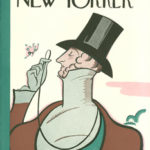I love the New York Times Magazine.
At first glance, this may seem a low risk, even dull, statement.
But the truth is that reading this weekly hodgepodge of facts and articles and photos, of politics and science and culture and fiction, is almost a secret pleasure. It’s varied. It’s easy to read. There’s almost always something, maybe several things, of interest.
Of course, loving the NYT Mag not nearly as shameful as loving People magazine, which I also love and which I read with rapt attention at the gym enabling me to ascend huge hills on my favorite elliptical trainer. But it’s not the New Yorker or New England Journal either.



Still, for a person interested in writing that captures – and holds – people’s attention, this week’s NYT magazine offered several great examples of techniques.
Here are two examples of very smart editorial and writerly choices from this week’s issue:
- The medical case by Lisa Sanders
- This feature grabs your attention with a few sentences in large print under a picture
- It begins with a quote, “My neck hurts.” The next two short sentences inform us the speaker is a 9-year-old boy, pointing to a lump on the side of his neck. Then this: “His mother hurried to the boy’s bed. It looked as if he had swallowed a golf ball. Even the lightest touch hurt.”
- Right away, we are concerned for the boy, and his mother, and we want to know what’s going on
- The case then starts off not as a medical case would but as a story, deepening the mystery: “The boy seemed fine when his mother dropped him off at school…”
- Best of all: subtitles that grab your attention. They appear in red, with just 4-6 brief paragraphs between them. They offer everything a story should: conflict, crisis, and resolution. Here they are
- Confounded doctors
- A nurse with an idea
- The dangers of inflammation
- A heart-felt disease
- Healing
- The Google article by Adam Fisher
- First, the article starts in medias res: there are two rafts 55 miles down the Colorado River with many people and two very expensive (Google) cameras on board when a thunderstorm sneaks up on them…
- So the lead or lede is a crisis. The drama is in full swing. No throat clearing, no descriptions of the Grand Canyons red rock walls, or who these people are exactly and what they are doing on the river. We can find that out later, now that we’re hooked.
- Second, this is a classic example of a narrative weave. There are two stories here, the story of the raft trip and impending storm and the story of how digital maps came to be which itself includes a competition, idea theft, hacking, and a race for global domination.
- The genius of a weave is that it creates tension and staves off boredom.
- Tension is created because it tells you a certain amount about one narrative thread then leaves that hanging, pulling you through the next section because you want to know what will happen.
- Boredom is staved off because there’s never too much of any one thing. In this example, there’s a more story based narrative thread and a more journalistic one. if you prefer one to the other but kind of like both, you know the part you like least won’t last too long before you get a dose of the part you like best.
I wish I could also report that this week’s NYT magazine also contained one of the articles the People magazine part of me loves – a profile of some public figure that simultaneously teaches me something about art or politics or science or life while also allowing me a half hour of sanctioned voyeurism into another person’s life. It didn’t. That’s not a bad strategy either…
